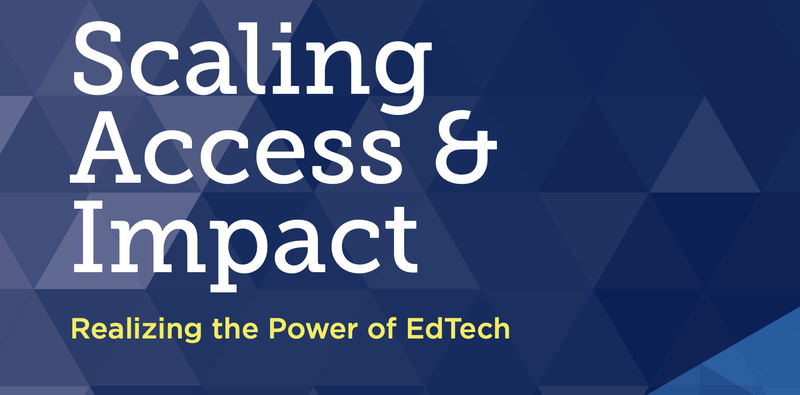Scaling Access & Impact: Realizing the Power of EdTech

Download the executive summary of Scaling Access & Impact: Realizing the Power of EdTech
There are 250 million learners around the world who have finished their schooling – yet aren’t able to read or write well and lack the skills they will need to succeed in the 21st century. The Brookings Institute described a 100-year gap, the century it will take for the world’s poor children to achieve educational parity with the wealthy at today’s pace.
Equitable EdTech can help to close the gap for students while also empowering teachers to be more effective, especially when there is lack of access to high-quality schools, high-quality teacher training, rigorous curriculum, or appropriate interventions.
Countries around the world are increasingly recognizing the need to improve student learning outcomes as well as the power of technology to support that goal. That recognition has driven education leaders to integrate EdTech into their education systems, schools, and classrooms.
While this is an important opportunity for EdTech to improve teaching and learning at scale, what is far more complex and critical is to ensure that EdTech can advance equitable, high-quality education for all learners regardless of where they live, how much their family earns, or where they study.
Omidyar Network commissioned Scaling Access & Impact: Realizing the Power of EdTech to evaluate what might be necessary to enable, scale, and sustain Equitable EdTech on a national basis. We examined initiatives in Chile, China, Indonesia, and the USA that demonstrate how EdTech reached a broad spectrum of students.
Download the executive summary to learn more about some of the events, actions, and initiatives that have contributed to the equitable scaling of EdTech as well as help inform policies using the highest-impact interventions.
There are five reports in the “Scaling Access & Impact: Realizing the Power of EdTech” series.